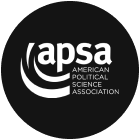Frontiers in Social and Behavioral Science features new research in the flagship journals of the Social Science Research Council’s founding disciplinary associations. Every month we publish a new selection of articles from the most recent issues of these journals, marking the rapid advance of the frontiers of social and behavioral science.

Using leading air quality models, a study estimates the benefits and costs of air pollution regulation in U.S. markets and finds that benefits outweigh costs tenfold.
We develop a framework to estimate the marginal cost of air pollution regulation and apply it to assess policy efficiency. We exploit a provision of the Clean Air Act that requires new plants to pay incumbent facilities to reduce emissions. This "offset" policy creates hundreds of local pollution markets, differing by pollutant and location. Theory and transaction data suggest that offset prices reveal marginal abatement costs. We compare these prices to marginal benefits of pollution reduction estimated using leading air quality models and find that, on average, marginal benefits exceed marginal costs by more than a factor of ten.

A panel dataset of over 10 million rural residents suggests that local hospital closures are linked to lower voting rates in national elections.
We investigate how hardships affect rural politics, considering the case of hospital closures. In the last two decades, more than two hundred rural hospitals have closed their doors or drastically reduced their services. Drawing from resource models of voting, our hypothesis is that personal- and community-level deprivations brought about by hospital closures should reduce election turnout. Empirical tests pair geographic information on the location of open and closed hospitals with data from state voter files to create a panel of over 10 million rural residents for the 2016, 2018, and 2020 national elections. Results show that individuals whose nearest hospital closed prior to the proximate election were less likely to vote than their unaffected counterparts. These effects are strongest for older and lower-income residents, but they decay over time so that voting likelihood resembles a pre-closure baseline within 12 months.

Interviews conducted across 3 states on currently incarcerated or recently released men provide insight into why and when people in prison politically mobilize.
Prior studies cast U.S. imprisonment as politically demobilizing. This article complicates that proposition by exploring when, and how, threat under penal confinement leads people to mobilize. Using interviews with currently incarcerated and recently released men across three states, I show that although imprisonment generally fosters political inaction, collective mobilization does arise under certain conditions. First, people in prison mobilize in response to embodied threats—fundamental threats eliciting visceral reactions that signal future harm (i.e., premature death or permanent incapacitation). Second, to collectively mobilize, a subpopulation of similarly threatened prisoners must be present and see the threats as a shared problem. Collective prisoner mobilization is more likely when both conditions are present; mobilization is unlikely when neither condition is present; and individual political contention is more likely when conditions are partially present. This range of political responses among incarcerated people is more dynamic than previously reported. Imprisonment has selective political effects, mobilizing the most repressed individuals within prison to devise new strategies to contest their repression.

Researchers propose a novel spatial statistical modeling framework to measure the properties of seabed sediments on the North West Shelf of Australia.
For offshore structures like wind turbines, subsea infrastructure, pipelines, and cables, it is crucial to quantify the properties of the seabed sediments at a proposed site. However, data collection offshore is costly, so analysis of the seabed sediments must be made from measurements that are spatially sparse. Adding to this challenge, the structure of the seabed sediments exhibits both nonstationarity and anisotropy. To address these issues, we propose GeoWarp, a hierarchical spatial statistical modeling framework for inferring the 3-D geotechnical properties of subsea sediments. GeoWarp decomposes the seabed properties into a region-wide vertical mean profile (modeled using B-splines), and a nonstationary 3-D spatial Gaussian process. Process nonstationarity and anisotropy are accommodated by warping space in three dimensions and by allowing the process variance to change with depth. We apply GeoWarp to measurements of the seabed made using cone penetrometer tests (CPTs) at six sites on the North West Shelf of Australia. We show that GeoWarp captures the complex spatial distribution of the sediment properties, and produces realistic 3-D simulations suitable for downstream engineering analyses. Through cross-validation, we show that GeoWarp has predictive performance superior to other state-of-the-art methods, demonstrating its value as a tool in offshore geotechnical engineering. Supplementary materials for this article are available online, including a standardized description of the materials available for reproducing the work.

An investigation of India’s business process outsourcing industry considers the impacts of workers forced to remove their regional accents to meet industry standards.
Mother tongue influence (MTI) is a widely used yet often underdefined term in India's business process outsourcing (BPO) industry. “Mother tongue” is an unavoidable, yet fraught political category linked to sovereignty, education, region, and ethnicity. Yet in the BPO industry, workers are expected to sound “global” with no identifiable regional “mother tongue” accent. Trainers in the BPO industry have responded to this challenge by working to remove workers’ MTI—and to remove workers with excessive MTI from the industry altogether. This paper argues that MTI gets used in the BPO industry to justify the erasure of both speech and speakers without overtly identifying the systemic privileging of upper-caste, elite, urban varieties of English and their speakers. Regional and ethnic affiliations are treated as intrinsic properties of persons and speech through “mother tongue,” while socially privileged accent trainers are able to claim their own global unmarkedness.

Agricultural data collected for Mexico’s pavilion at the 1900 Paris Exposition reveals the influence of local enumerators on the construction of administrative datasets.
Working with never-published agricultural data collected for Mexico’s pavilion at the 1900 Paris Exposition, this article argues that manuscript and published statistics represent a space to see state making as a multisided, ongoing process. Whereas historians have largely looked at statistics from the perspective of the state, highlighting bureaucrats’ projections of desired realities and political projects, here I show how local enumerators’ investment in statistical undertakings asserted space for conversations and arguments about the nature and composition of the political or economic whole being represented. I present a methodology for working with historical statistics that takes aberrations, anomalies, and unruly data as signposts to be followed rather than errors to be corrected. In doing so, I argue for seeing not only the frustrated yet durable aspirations of statesmen but also the ways those beyond the central state reforged, reinforced, and remade representations of their homes through engagement with and investment in statistical practices.

A large-scale metaanalysis identifies the treatment and patient characteristics of U.S. service members and veterans who drop out of psychotherapy.
Dropout has been identified as a significant problem among military populations seeking psychotherapy (Goetter et al., 2015; Hoge et al., 2014), yet an overall estimate of its exact prevalence and predictors does not exist. The aims of the current meta-analysis were to estimate outpatient psychotherapy dropout rates for this population and evaluate potential moderators of this event. In total, 283 articles—comprising data from 719,465 U.S. service members and veterans—met all inclusion criteria and were included in the meta-analysis. The average weighted dropout rate for all outpatient therapies was 25.6%, 95% CI [22.4%, 29.2%], and prediction interval [1.9%, 85.9%]. Furthermore, dropout was 27.0% for cognitive behavioral therapies (CBTs), 25.3% for trauma treatments, 27.6% for the Department of Veterans Affairs (VA), 28.9% for individual therapies, and 9.8% for intensive outpatient settings. Findings from metaregression analyses using mixed-effects models indicated that higher dropout was linked with the following after accounting for other moderators: younger age, CBTs, nonmanualized approaches, VA versus Department of Defense settings, individual versus group therapies, and weekly versus intensive outpatient formats. Dropout was not linked with other client, therapist, treatment, and research variables. Taken together, dropout estimates were obtained for a range of military populations and treatment characteristics, including theoretical orientation, presenting concern, setting, and therapy formats. These estimates may provide potential benchmarks for therapists, administrators, and policymakers serving military populations. Leveraging dropout prevention strategies with at-risk groups highlighted in this study may enhance mental health care outcomes for this high-need population.






